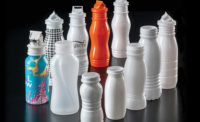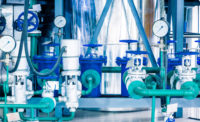Sustainability: it has become more than a buzzword for the entire manufacturing industry. The Dairy industry can and is making a huge difference by improving its processes through sustainable production solutions — e.g., by reducing gas emissions and water pollution. Here are three ways to make your dairy plant more sustainable.
Steps toward net zero emissions
GHG (greenhouse gas) emissions are the most talked-about topic in the dairy industry sustainability conversation. 14.5% of the total greenhouse gas (GHG) emissions caused by humans come from animal livestock raised at dairy farms. On the other hand, dairy plants cause the majority of their GHG emissions through use of energy for production and wastage created when products don’t meet their quality standards.
Dairy plants can play a major role in reducing GHG emissions with new technologies for efficient production and waste handling. Dairy plants’ major GHG emissions come from the waste byproducts that are usually thrown away untreated. These biodegrading materials release GHGs — including methane and carbon dioxide — when released into the environment.
Anaerobic digesters or ADs are becoming a popular way of dealing with animal manure and solid waste at dairy farms. These digesters contain complex microbial communities that break down waste and produce biogas and digestate (a mix of leftover solids and liquid). ADs can be used by dairy plants to deal with their waste and byproducts. Dairy plants can either invest in an AD or send the waste to a dairy farm facility with one. When dairy farms are offered the opportunity, they have an incentive to invest in the technology and introduce it to their farms.
Another unsustainable practice in the dairy industry is the use of packaging that uses plastics — including PET4 and HDPE. Paperboard cartons are a much more sustainable option with lesser GHG emissions and a smaller carbon fotprint. Plants should also explore the possibility of using renewable sources for part of their day-to-day activities to improve their environmental sustainability.
Using water efficiently
The dairy industry uses anywhere between 1-10 cubic meters of water to produce one cubic meter of milk. Dairy plants create wastewater that contains milk particles and chemicals used in cleaning the equipment and the plant. There is also wastewater created during production.
Conserving water is a huge factor for sustainable production in a dairy plant. Firstly, use of water in cleaning should be minimized wherever possible. The plant can invest in floor scrubbing machines to reduce water usage for plant floor cleaning, and vacuum cleaners can also come in handy.
Using water at the same rate for different cleaning tasks also results in wastage. Where possible, high-pressure/low-volume water cleaning for surfaces should be adopted. The leaks in the system should be regularly checked and repaired. Finally, if and when it’s possible, all wastewater should be treated and recycled to be used again in the production — creating a circular production system.
Maintenance for sustainability
Maintenance, when done right, can become a tool for a dairy plant in achieving sustainability goals. Sustainable maintenance involves using maintenance processes and tools that have a smaller impact on the environment and the community.
The primary way maintenance can affect plant sustainability is by improving the energy efficiency of production. When production uses less energy, the plant also reduces cost of production. Better and uninterrupted production reduces the number of products that don’t meet quality standards and become waste.
Better maintenance also ensures that the machines and other assets of the plant last longer. The longer life means the machines don’t have to be replaced often and improves the carbon footprint of the plant. Regular maintenance can also reduce the volume of water required for cleaning.
Modern plants use predictive maintenance scheduling along with IIoT and advanced algorithms. Dairy plants can upgrade their machines or retrofit them with sensors to create the infrastructure for IIoT and the smart factory.
Smart predictive maintenance uses historic and real-time machine data to predict failure and schedule maintenance. This reduces unplanned downtime, minimizes maintenance downtime, and helps avoid breakages. The key to making the most out of this technique is maintaining a robust database and following the maintenance schedule.
Conclusion
The dairy industry has accepted its responsibility in the sustainability movement. Dairy plants can play a major role in affecting all stages of dairy production, playing their part in a sustainable supply chain. It is vital to consider the plant’s impact on the environment — but remember that sustainability is more than just reducing GHG emissions or saving water. It encompasses both socially and economically responsible behavior.
Editor's note: The views expressed in this column are that of the author and do not necessarily represent the views of Dairy Foods or its parent BNP Media.



